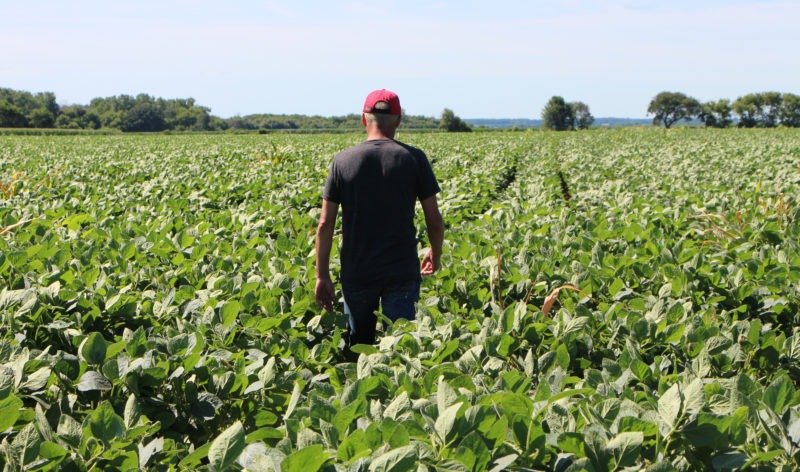The farm goods at the heart of the US-China trade war
Farmer Terry Davidson walks through his soy fields in Harvard, Illinois in July 2018 (Nova SAFO)
<p>New York (AFP) – In trade negotiations with China, President Donald Trump has made it a priority that the Asian giant buy tens of billions of dollars in US farm goods. Achieving that goal is another matter.</p><p></p><p>- How much do the US and China trade? -</p><p></p><p>From 2008, China was either the largest or second-largest importer of American agricultural products. That all changed when the Trump administration launched the wide-ranging trade war. </p><p>In response to Washington-imposed sanctions, Beijing chose measures targeted particularly at US farmers, such as increasing taxes on soy imports to 33 percent and on pork imports to 72 percent.</p><p>The effect was immediate: US agricultural exports, which had peaked at $26 billion in 2012-2013 after a drought caused grain and oilseed prices to skyrocket, plummeted to $9.2 billion in 2018, from $19.5 billion in 2017.</p><p>But since September, China has made several goodwill gestures, most notably by increasing its orders for US products.</p><p>According to the US Department of Agriculture, Chinese buyers committed in early December to buying nearly 9.8 million tons of soy from this year’s summer harvest, versus the slightly less than 500,000 tons they bought from the same period in 2018.</p><p>The new amount is still far less than the 21.5 million tons purchased in 2017.</p><p>Beijing also announced on December 6 it had begun exempting certain imports of US pork and soy from customs taxes. In October, China also lifted an embargo on US poultry that had been in effect since 2015.</p><p></p><p>- What does Trump want? -</p><p></p><p>Although few details have emerged on trade negotiations, Trump said in October that China had agreed to buy $40 to $50 billion dollars worth of US agricultural products.</p><p>"It is pretty obvious that, ahead of the next election, President Trump wants to maintain his base in the agricultural community," said Bill Nelson, a chief economist at Doane Advisory Services.</p><p>To soften the losses suffered by US farmers affected by<b> </b>new customs taxes, the Trump administration agreed to provide a total of $28 billion over the course of 2018 and 2019.</p><p>But farmers have regularly stressed they would prefer to earn money by selling their products.</p><p></p><p>- Is this goal realistic? -</p><p></p><p>China could relatively easily import another $20 to $25 billion of US agricultural products again, if only by turning to the US for soybeans as opposed to Brazil or Argentina, according to Nelson.</p><p>But he thinks it is "unlikely" that China could suddenly buy as much as $50 billion worth of goods each year.</p><p>When US exports peaked at $26 billion, agricultural commodity prices were significantly higher. For instance, soy cost $13 to $17 per bushel, compared to its current price of about nine dollars per bushel.</p><p>In addition to soy and sorghum, China would also need to buy significantly more corn, wheat and cotton, and to consider products like ethanol as agricultural goods.</p><p>But even doing so would not necessarily produce a miracle.</p><p>Beijing — whose pig population has been hit hard by an epidemic — increased the volume of US pork it imported by 55 percent between January and October of this year, but that added up to only $975 million, according to the US Meat Export Federation.</p><p></p>
Disclaimer: Validity of the above story is for 7 Days from original date of publishing. Source: AFP.


